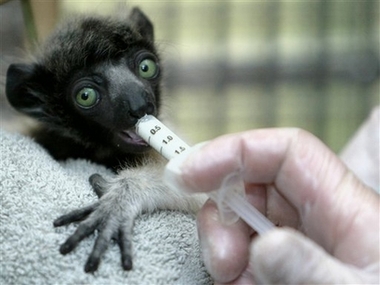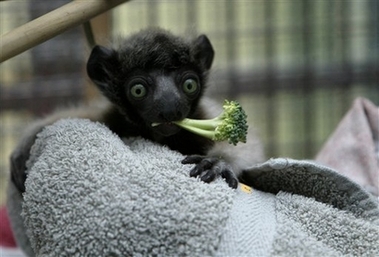More Worldwide Cuties

A veterinarian feeds a baby Crowned Sifaka lemur named Tilavo at the Vincennes zoo, east of Paris, France. Tilavo is one of the two baby lemurs born in the zoo in the beginning of January as part of a European breeding programme handled by the zoo. He must be fed artificially because the mother has problems nursing him. The zoo owns 10 lemurs out of the 20 living in captivity around the world. According to the International Union for the Conservation of Nature, the Propithecus verreauxi coronatus population, which lives in northwestern Madagascar, may be betweeen 100 and 1,000, and is categorized as 'Critically Endangered' due to habitat loss or degradation from agriculture/livestock and wood harvesting.

Labels: animal photos, animals, funny, funny pics, lemurs, Pets
August 12, 2007 at 5:22 AM
Hehe, he likes broccoli too, just like hamsters!